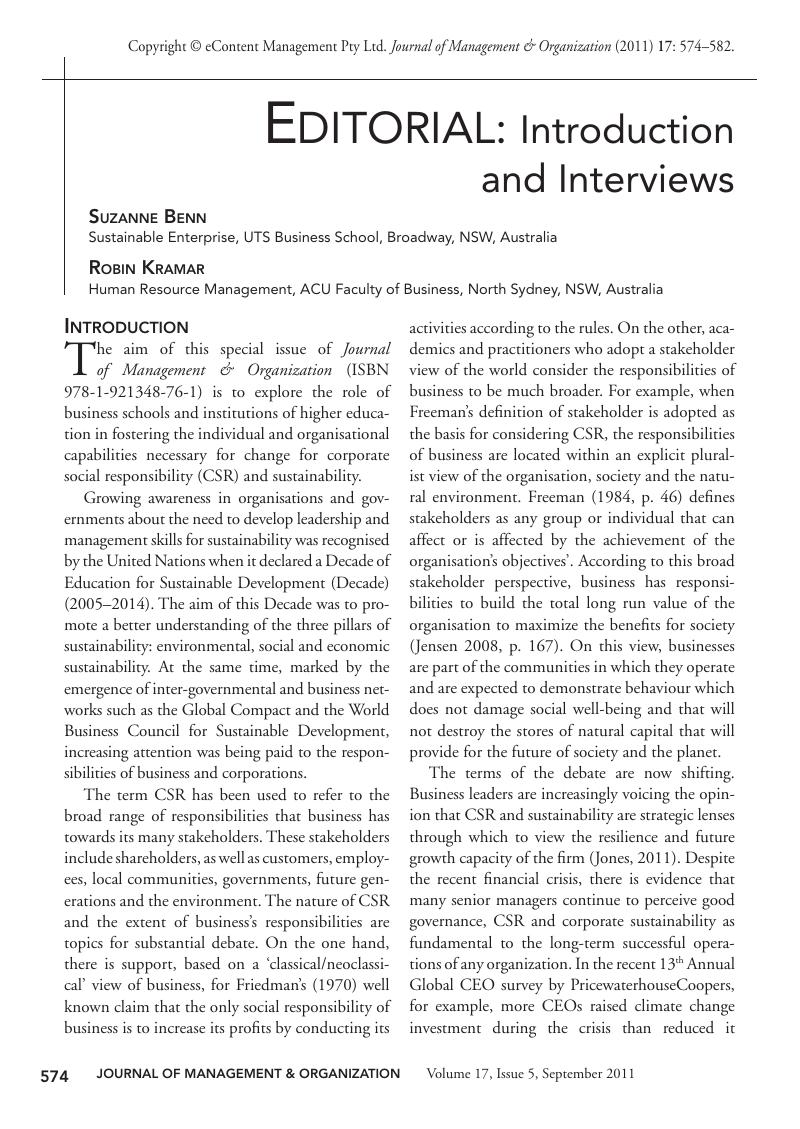Crossref Citations
This article has been cited by the following publications. This list is generated based on data provided by Crossref.
Setó‐Pamies, Dolors
2015.
The Relationship between Women Directors and Corporate Social Responsibility.
Corporate Social Responsibility and Environmental Management,
Vol. 22,
Issue. 6,
p.
334.
Setó-Pamies, Dolors
and
Papaoikonomou, Eleni
2016.
A Multi-level Perspective for the Integration of Ethics, Corporate Social Responsibility and Sustainability (ECSRS) in Management Education.
Journal of Business Ethics,
Vol. 136,
Issue. 3,
p.
523.
Ruth, Derek
and
Sui, Sui
2022.
The Effect of Board Gender Diversity and Environmental Responsibility on Innovation: Evidence from the Top-Patenting Firms.
Journal of Comparative International Management,
Vol. 25,
Issue. 2,
p.
178.
Gaio, Cristina
and
Gonçalves, Tiago Cruz
2022.
Gender Diversity on the Board and Firms’ Corporate Social Responsibility.
International Journal of Financial Studies,
Vol. 10,
Issue. 1,
p.
15.


